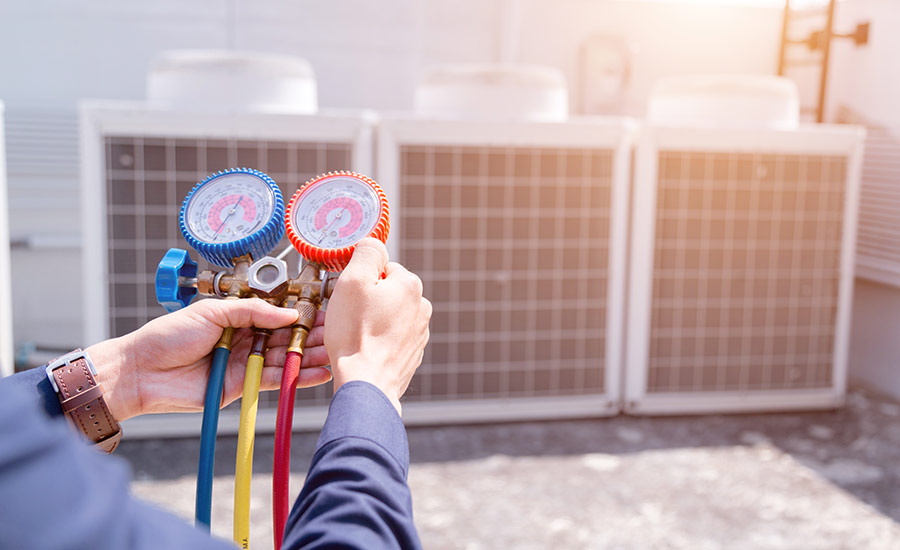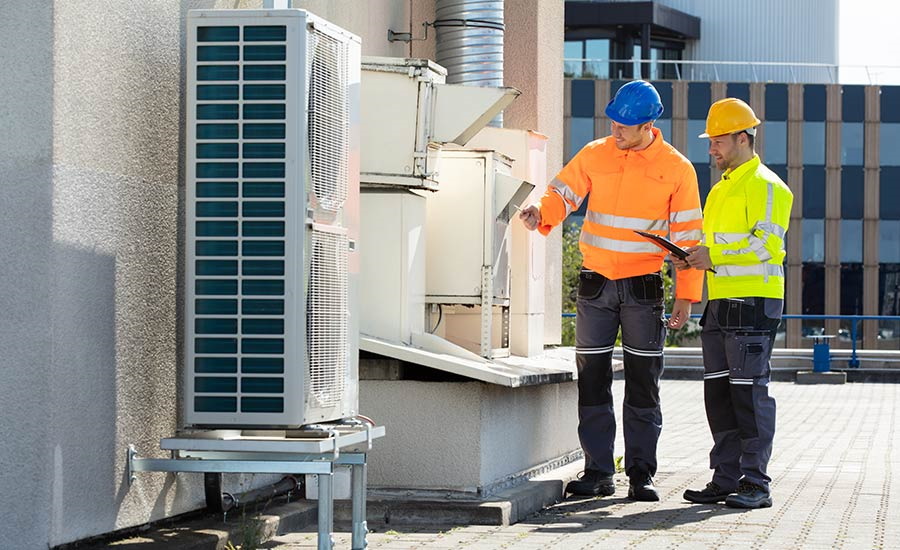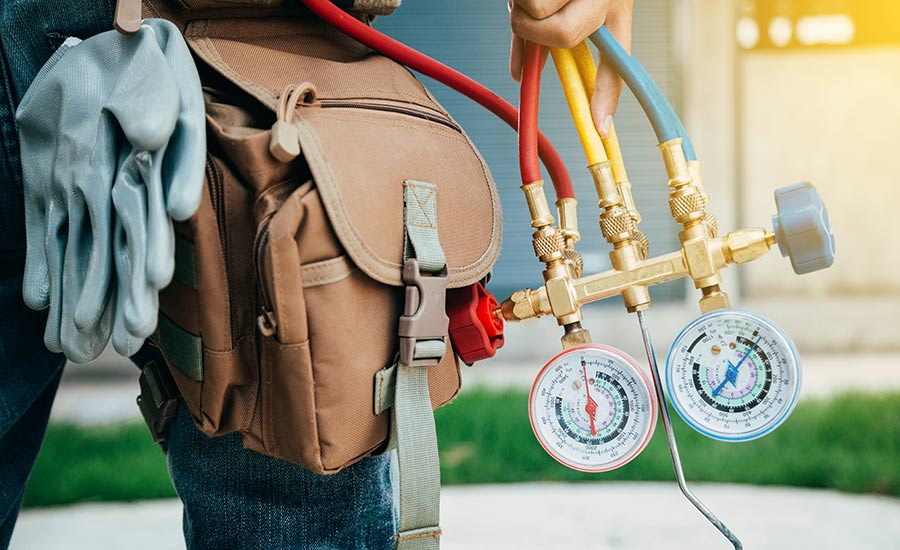
Routine maintenance and upgrades to HVAC equipment, combined with high quality insulation, can help cut down on heating and cooling bills by 20% to 50%.
As a technician, an HVAC maintenance checklist can help you maintain or repair a unit by making sure all parts are checked thoroughly with each inspection — securing customer satisfaction while providing homeowners or business owners with cost savings.
From cleaning and lubricating to component replacement, we’ll share comprehensive checklists in this HVAC maintenance guide and explain how to digitize the entire process with mobile forms.
Table of Contents
Ready to create an HVAC maintenance checklist?
Try doForms for free
What Is An HVAC Maintenance Checklist?
An HVAC maintenance checklist is a systematic list of tasks designed to help maintenance technicians assess and repair heating, ventilation and air conditioning (HVAC) systems.
An HVAC checklist considers:
- The system’s location
- Frequency of use
- System condition
- System age
- System brand and life expectancy
Why Use An HVAC Maintenance Checklist?
From organizing tasks to improving workflow, HVAC maintenance checklists offer:
- A structured approach: HVAC checklists provide an organized approach to HVAC maintenance, ensuring that all critical areas are thoroughly inspected.
- Procedure standardization: HVAC checklists streamline maintenance procedures, making it easy to follow a consistent process each time maintenance is conducted.
- Efficient task management: HVAC checklists clearly outline tasks, which helps technicians or maintenance personnel to manage their time efficiently.
- Organized documentation: HVAC checklists serve as documentation tools as they help track completed tasks, analyze trends and make strategic decisions.
- Aid for training and onboarding: HVAC checklists serve as valuable training tools for new technicians, helping them understand the step-by-step procedures involved in HVAC maintenance.
- Improved task delegation: HVAC checklists enable clear communication of responsibilities and improve work order management making it easy to delegate tasks among team members.
- Compliance assurance: HVAC checklists ensure that maintenance tasks comply with industry regulations and standards.
What Industries Use HVAC Maintenance Checklists?
HVAC specialized companies are not the only ones that use HVAC maintenance checklists.
Whether you are managing a hotel or a healthcare facility, providing your on-site technicians with a detailed HVAC maintenance checklist will help keep your heating, ventilation and air conditioning systems in proper working condition.
Industries that can benefit from HVAC maintenance checklists include:
- Commercial offices: Businesses with office spaces rely on HVAC checklists to provide a comfortable working environment for employees and prevent disruptions due to system failures.
- Retail stores: Retail establishments use HVAC checklists to both ensure a pleasant atmosphere for customers and protect merchandise from temperature-related damage.
- Restaurants and food services: Food industry relies on HVAC checklists to maintain food quality and adhere to health regulations regarding food safety.
- Hospitality: Hotels and resorts use HVAC checklists to maintain reliable systems that provide a comfortable stay for guests and minimize the risk of complaints.
- Healthcare facilities: Hospitals and clinics use HVAC checklists to ensure precise temperature and air quality for their patients’ well-being, maintain sterile environments and prevent the spread of airborne contaminants.
- Manufacturing plants: Industrial facilities rely on HVAC checklists to ensure climate control, prevent equipment overheating and maintain product quality.
- Educational institutions: Schools and universities need HVAC checklists to create a pleasant learning environment and prevent disruptions to classes due to heating or cooling issues.
Also Read:
HVAC Preventative Maintenance Inspection Checklist
Preventative maintenance can help prolong equipment life, enhance efficiency and safety, lower energy bills and reduce costs for full repair.
Points on your HVAC preventative maintenance inspection checklist should include:
- Conduct an external inspection of the HVAC equipment
- Eliminate any obstructions in the way of air circulation
- Inspect the system for air leaks
- Inspect blowers or fans to make sure they are working properly
- Inspect heating elements for damage, wear or tear
- Inspect wiring and electrical components
- Inspect thermostat operation and readings
- Inspect refrigerant levels
- Inspect exhaust outlets
- Inspect fuel lines if the furnace is gas
- Inspect carbon monoxide levels
- Compare the system’s operation to the manufacturer specifications
- Plan repairs, if needed

An HVAC maintenance checklist ensures all components are inspected and work properly
Spring & Summer HVAC Maintenance Inspection Checklist
Depending on the location, summer heat can be a challenge for HVAC systems.
Points on your spring and summer HVAC maintenance inspection checklist should include:
- Remove dirt, dust or debris from outside HVAC units
- Inspect ducts for dust, debris or mold
- Replace system filters
- Check thermostats and thermostat controls to make sure they are set properly
- Change thermostat batteries
- Inspect the refrigerant charge for leaks
- Inspect the electrical system and all connections
- Clean condensers and evaporator coils
- Ensure proper flow by cleaning drain pans and clearing clogs
- Empty drain pans from standing water to avoid overflows
- Change damaged or worn pulleys and belts
- Inspect the fan motor to make sure it’s working properly
- Inspect the HVAC cabinet for leaks
- Check the HVAC cabinet doors to ensure tight closure
- Lubricate the system’s moving parts
- Check the blowers and blades to ensure proper airflow
Fall & Winter HVAC Maintenance Inspection Checklist
If the same system is used to both heat and cool a home or a business, the fall and winter maintenance inspection checklist will be similar to the checklist above. If a furnace is used, additional items should be added to the checklist.
In addition to the above checklist, points on a fall and winter HVAC maintenance inspection checklist should include:
- Replace HVAC filters every 30 to 90 days
- Inspect the ignition burner
- Inspect heating elements or heat exchanger for signs of damage to prevent carbon monoxide leakage
- Inspect the flue system to make sure it is firmly attached to the furnace and transfers the exhaust gases to the outdoors
- Inspect the furnace for leaks
- Inspect gas pressure
- Replace worn or damaged belts and pulleys
- Drain water from the system lines and pans to prevent overflow
- Inspect wiring and electrical connections
- Lubricate bearings, motors and other moving parts
- Make sure the thermostats and controls are set to the desired temperatures

Change HVAC filters regularly to ensure better air quality and a safe environment
Build Custom HVAC Maintenance Checklists With doForms
Around 44% of companies are still using paper checklists to monitor their maintenance activities, resulting in disorganization, lost files and reduced productivity.
Not to mention, paper can cost your business big time — on average, businesses spend over $8,000 per year on paper alone!
On the other hand, businesses that have gone digital are benefiting from improved productivity, streamlined processes, a reduced environmental footprint and even higher customer satisfaction rates.
From smartphones and laptops to tablets and desktop computers, digitizing your HVAC maintenance checklist with mobile forms has never been easier.
Accessible any time and from any place, doForms is a mobile forms solution that facilitates accuracy, speed and efficient data management of HVAC maintenance checklists, customer profiles, work orders and more.
With doForms, you can customize existing templates in our library or create your own checklist.
You can securely view, edit and share your maintenance inspections, reports and work orders in real-time, assign follow-up tasks, schedule upcoming inspections and more.
Digitizing the process with doForms allows you to keep all of your information in one, secure place.
You can view inspection and repair history, plan future maintenance, view customer profiles and streamline your processes while increasing efficiency and decreasing costs.
Ready To Say Goodbye To Paper Forms?
Try doForms for free
FAQS About Digital HVAC Maintenance Checklists
For more information on HVAC maintenance checklists, check out our FAQs section below.
How often should an HVAC system be inspected?
Both home and commercial HVAC systems should be thoroughly inspected at least two times per year, in spring and in fall.
As transitional seasons without temperature extremes, spring and fall are ideal to inspect and prepare the HVAC system for freezing winter nights or scorching summer days.
If the equipment is older, more frequent system inspections may be needed.
How often should HVAC filters be cleaned and replaced?
HVAC filters should be replaced or cleaned on a quarterly basis, if a home or a commercial building is in a relatively clean environment. In polluted environments and special building types, such as medical or military buildings, the filters may need to be replaced more often.
Many modern commercial HVAC units use maintenance sensors that alert when filters need to be changed.
Can I customize HVAC maintenance checklists for commercial and residential systems?
Yes, while some tasks may differ, the principles of HVAC maintenance checklists are applicable to both commercial and residential systems, to ensure optimal performance and longevity.
With doForms, you can create your customized templates adding the information fields you need.
Do I need a seasonal maintenance checklist?
Yes, the tasks required for optimal system performance can vary between seasons, that’s why having separate checklists for heating and cooling will allow you to conduct thorough maintenance.
With doForms, you can easily create seasonal maintenance checklists for your HVAC system focusing on each area that needs your attention.
Can I integrate my digital HVAC maintenance checklists with other software or systems?
Yes, doForms allows you to integrate your maintenance checklists with other software and systems you are using, such as asset management systems and scheduling tools.




